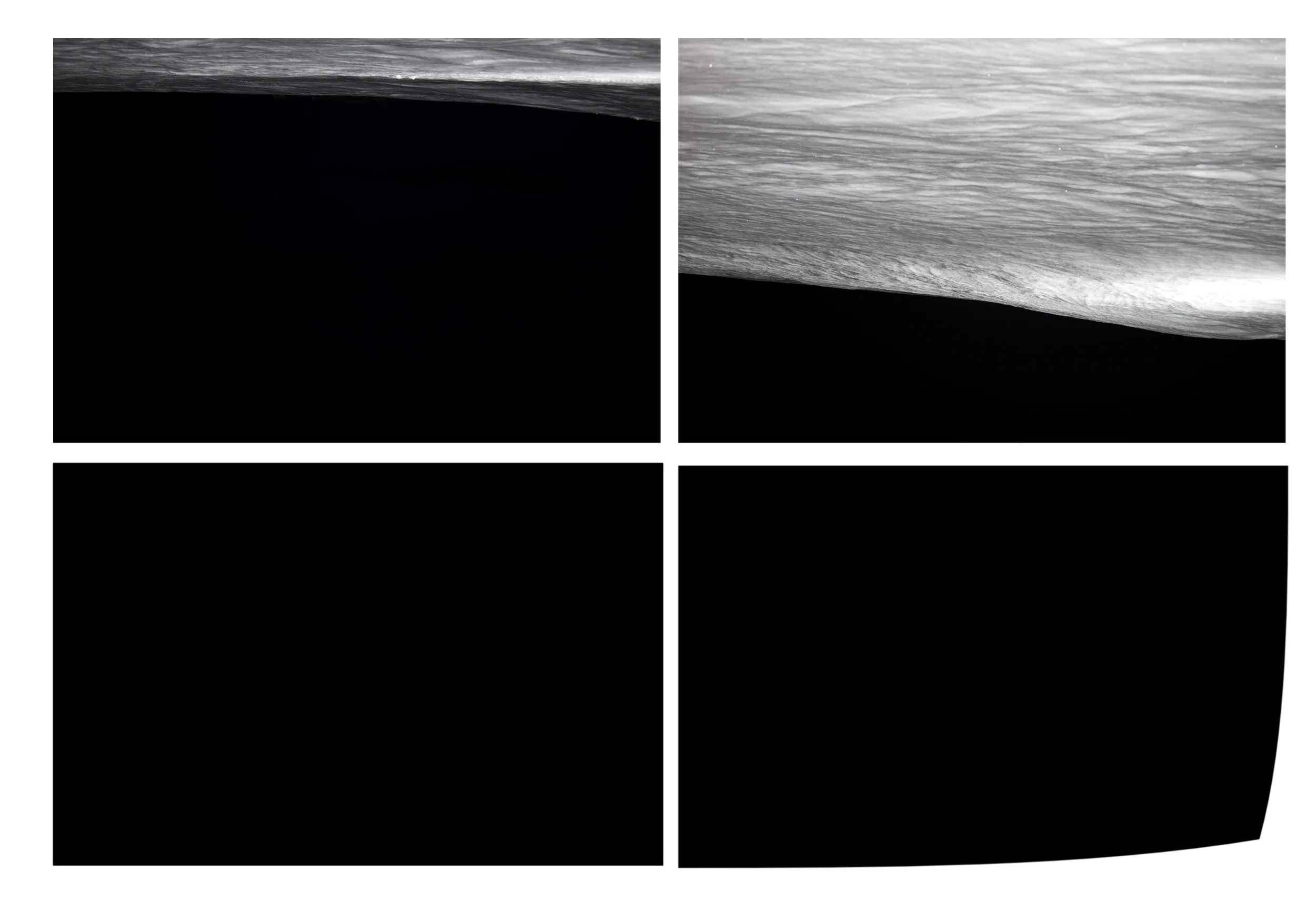Excerpted From Preternatural Catalog
By Celina Jeffery
... "Andrew Wright’s works may be described as multi-tiered inquiries into the nature of perception, photographic structures and technologies, and the ways we relate to an essentially mediated but primarily visual world. Wright uses the photographic medium but works across disciplines: film, installation, and sculpture amongst them.
Of late, Wright has been concerned with ideas of darkness and the void, often with monumental and sublime images of nature’s drama, as in the Falling Water series (2010). In Coronae (2011) an effulgent burst of light in blackness has been produced by drilling a minute hole in a canister of film which is then exposed, developed, and re-photographed in digital format. For Wright, black is “both surface and space . . . other spaces and places . . . falling in between these two things.” Wright’s large scale photographic installation, Nox Borealis, featured in Preternatural, continues this inquiry by featuring an Arctic snow scene at night.
Nox Borealis is comprised of twin images, one on top of the other: a large black colour field of total dark- ness and the other, an inverted image of the Arctic at night, depicting the black sky with a thin film of snow acting as a horizon line. A system of lighting within the exhibition space creates the illusion of a whiteout: a visual blurring caused by excessive blustery snow. Here, the pictorial dynamic turns outwards, addressing and inviting the spectator as a participant in a remote and ominous landscape.
The images were taken in Iqaluit, the capital of Nunavut, in 2010-11. The artist was interested in travelling north to experience a sense of scale and time that is totally disorienting and utterly deceptive. The series evolves from Wright’s overarching concern for illusionism, wherein the viewer is enticed to participate in a constant perceptual loop: in which we question how we know and see. In this regard, it’s important to ac- knowledge the scale and sculptural dimensionality of his work: there is a reversal of figure and ground on such an expansive scale that it meets the viewer’s bodily awareness with immersion. Subject matter slips in and out of the viewer’s comprehension as the illusion of nothingness and an inverted snow-scape morph into a moment of immersion for the viewer.
Time is presented as a delusion in the Arctic as our sense of space and bodily relationship to the ground is re-oriented. There is a silence and stillness that results, which feels remote to the frenzied visuality of a media-saturated culture and hence speaks more to the contemplation of an integrative condition of being. As we follow the inverted ‘horizon’ line through the serialized images we walk in and through the landscape, bringing our attention to the integration of the seen, heard and thought into one panoramic whole.
The
contemplation of nature has had a long discourse in the history or art:
here it is rendered as sustained observation, reflection upon the
interrelatedness of nature which collides with its sublime and
terrifying lonely Other. Reminiscent again of Casper David Friedrich’s Monk by the Sea (1809),
the viewer becomes the small and silent figure whose presence is
indistinct amidst the enormity of nature’s horizon. Mysterious and
inexplicable, Friedrich’s painting evokes the insignificance of man
through the solitude of a figure, a method at play in Wright’s vast and
remote landscape. It is within the latter thought that we may also
consider the mythological resonance of these images: a poetic expression
of what is elemental and brutal to the Arctic as both an image and
concept. Wright does not seek the picturesque as there is something
uncertain and dystopic even in his personal subversion of being ‘on top
of the world,’ which results in images that are far from comfortable and
familiar. It is here that we locate the preternatural: in the primeval
and even, predatory nature of this desolate scape. We are poised to
recognize and accept the powerful forces of nature in direct dialogue
with its fragility, the thin snowy line which brings something new: an
expression of contemporary anxieties about its disappearance. There is
something so remote and incalculable about this place, this other side
of the world which most of us will never access, but which is as crucial
to our panoramic sense of self. ..."
VIEW NOX BOREALIS






